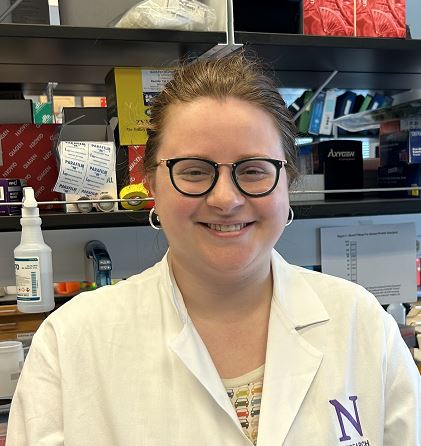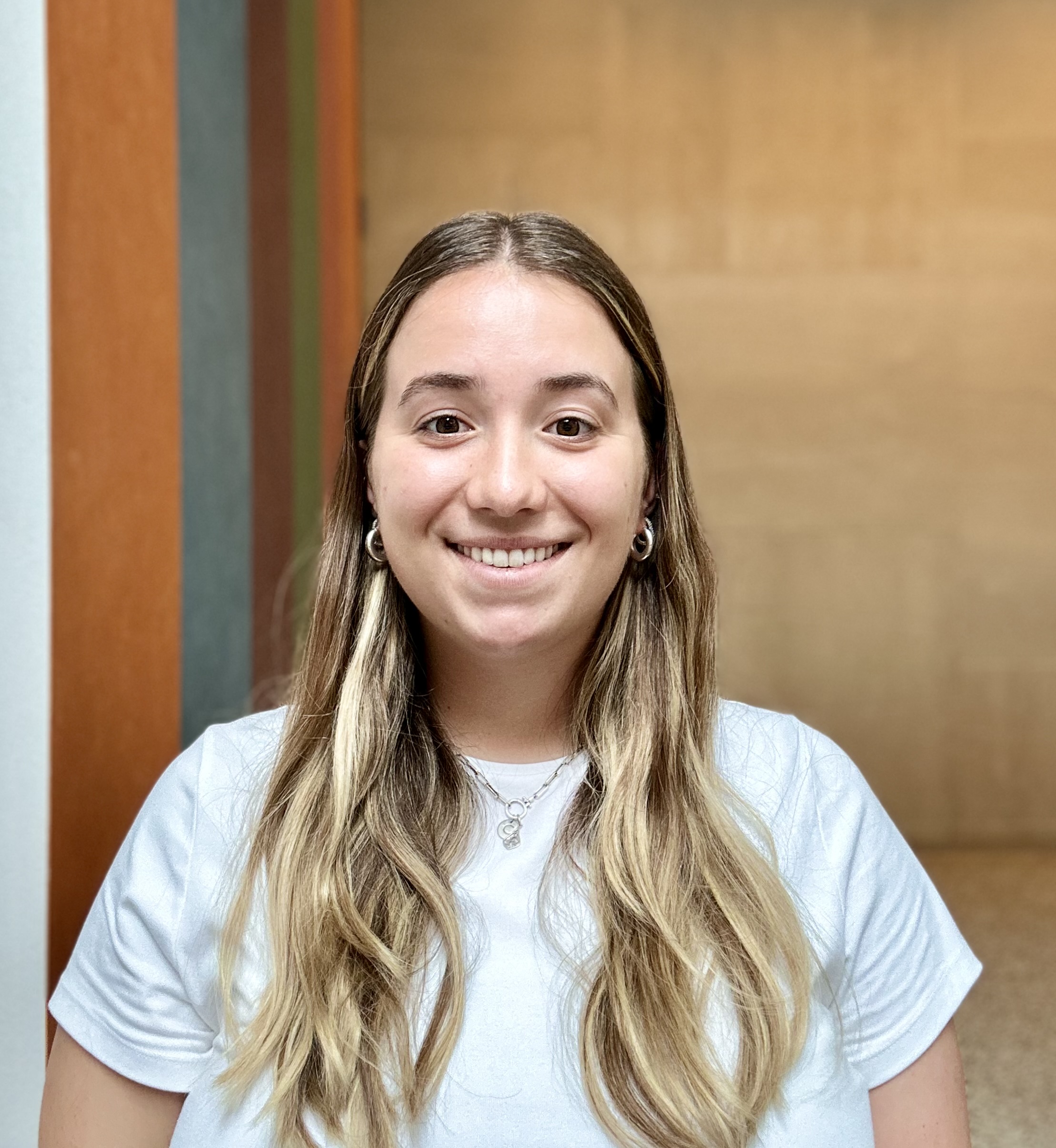Bulun Lab
The laboratory research of Serdar E. Bulun, MD, studies steroid hormone action and production in hormone-dependent human diseases such as endometriosis, uterine fibroids, and skeletal muscle atrophy.
About Our Work
Our Focus
Publications
Endometriosis
Treatment of Endometriosis with Aromatase Inhibitors
Treatment with aromatase inhibitors is the most commonly used form of nontoxic treatment in postmenopausal breast cancer. Aromatase is the key enzyme for estrogen formation in human tissues. Our research recently showed large amounts of aromatase thus estrogen formation in endometriosis. Inhibition of this enzyme in animal models and human disease decreased inflammation and growth in endometriosis and significantly reduced pain associated with endometriosis. In postmenopausal women, use of an aromatase inhibitor in combination with a bisphosphonate is the treatment of choice in patients who do not respond to surgical resection.
In premenopausal women, aromatase inhibitors are used in combination with an additional drug that suppresses the ovaries because aromatase inhibitor-only treatments may give rise to ovarian stimulation. This additional drug may be a GnRH agonist (eg, Zoladex), progestin (eg, norethindrone acetate) or a birth control pill (eg, Alesse). Currently, some physicians prescribe these regimens to treat premenopausal endometriosis not responding to currently available treatments or in patients who cannot use existing treatments because of their side effects. The majority of these premenopausal patients respond favorably having decreased pelvic disease and reduced pain. Treatment of endometriosis with aromatase inhibitors is still considered experimental, since there are no current efforts known to the public for obtaining FDA approval for their use in treating endometriosis.
The side effects of aromatase inhibitors include mild hot flashes and decreased libido. If aromatase inhibitors are administered alone to postmenopausal women, they cause osteoporosis and should be combined with a bisphosphonate. In premenopausal women, the combination of an aromatase inhibitor with a progestin or birth control pill does not cause osteoporosis, whereas that combination with a GnRH agonist (eg, Zoladex) causes osteoporosis.
Suggested Reading
Clinical Trials and Case Reports (Aromatase Inhibitors for Treatment of Endometriosis)
- Takayama, K, Zeitoun, K, Gunby, RT, Sasano, H, Carr, BR and Bulun, SE, Treatment of severe postmenopausal endometriosis with an aromatase inhibitor. Fertil Steril. 1998; 69: 709-713.
- Ailawadi, RK, Jobanputra, S, Kataria, M, Gurates, B and Bulun, SE, Treatment of endometriosis and chronic pelvic pain with letrozole and norethindrone acetate: a pilot study. Fertil Steril 2004; 81: 290-6.
- Amsterdam L, GW, Rubin S, Jobanputra S, Wolf M, Bulun SE, Anasrozole and oral contraceptives: A novel treatment for endometriosis. Fertil Steril. 2005. In Press.
- Soysal, S, Soysal, M, Ozer, S, Gul, N and Gezgin, T, The effects of post-surgical administration of goserelin plus anastrozole compared to goserelin alone in patients with severe endometriosis: a prospective randomized trial. Hum Reprod 2004; 19: 160-167.
- Shippen, ER and West, WJ, Jr., Successful treatment of severe endometriosis in two premenopausal women with an aromatase inhibitor. Fertil Steril 2004; 81: 1395-8.
- Razzi, S, Fava, A, Sartini, A, De Simone, S, Cobellis, L and Petraglia, F, Treatment of severe recurrent endometriosis with an aromatase inhibitor in a young ovariectomised woman. Bjog 2004; 111: 182-4.
- Bulun, SE, Imir G, Utsunomiya H, Thung S, Gurates B, Tamura M, Lin Z. Aromatase in endometriosis and uterine leiomyomata. J Steroid Biochem Mol Biol. 2005. In Press.
Reviews and Original Articles on the Role of Aromatase in Endometriosis
- Zeitoun, KM and Bulun, SE, Aromatase: a key molecule in the pathophysiology of endometriosis and a therapeutic target. Fertil Steril 1999; 72: 961-9.
- Bulun, SE, Zeitoun, K, Takayama, K, Noble, L, Michael, D, Simpson, E, Johns, A, Putman, M and Sasano, H, Estrogen production in endometriosis and use of aromatase inhibitors to treat endometriosis. Endocr Relat Cancer 1999; 6: 293-301.
- Noble, LS, Takayama, K, Putman, JM, Johns, DA, Hinshelwood, MM, Agarwal, VR, Zhao, Y, Carr, BR and Bulun, SE, Prostaglandin E2 stimulates aromatase expression in endometriosis-derived stromal cells. J Clin Endocrinol Metab 1997; 82: 600-606.
- Zeitoun, K, Takayama, K, Michael, MD and Bulun, SE, Stimulation of aromatase P450 promoter (II) activity in endometriosis and its inhibition in endometrium are regulated by competitive binding of SF-1 and COUP-TF to the same cis-acting element. Molec Endocrinol 1999; 13: 239-253.
- Noble, LS, Simpson, ER, Johns, A and Bulun, SE, Aromatase expression in endometriosis. J Clin Endocrinol Metab 1996; 81: 174-179.
- Bulun, SE, Yang, S, Fang, Z, Gurates, B, Tamura, M, Zhou, J and Sebastian, S, Role of aromatase in endometrial disease. J Steroid Biochem Mol Biol. 2001; 79: 19-25.
- Tsai, SJ, Wu, MH, Lin, CC, Sun, HS and Chan, HM, Regulation of steroidogenic acute regulatory protein expression and progesterone production in endometriotic stromal cells. Journal of Clinical Endocrinology & Metabolism 2001; 86: 5765-5773.
- SE Bulun, Imir AG, Utsunomiya H, Thung S, Gurates B, Tamura M, Lin Z. Aromatase in Endometriosis and Uterine Leiomyomata. J Steriod Biochem Mol Bio. 95:57-62 (2005).
- Attar E and Bulun SE, Aromatase and Other Steroidogenic Genes in Endometriosis: Translational Aspects. Human Reproduction. In Press.
Articles on the Use of Aromatase Inhibitors in Breast Cancer
- Goss, PE and Strasser, K, Aromatase inhibitors in the treatment and prevention of breast cancer. J Clin Oncol 2001; 19: 881-94.
- Buzdar, A and Howell, A, Advances in aromatase inhibition: clinical efficacy and tolerability in the treatment of breast cancer. Clin Cancer Res 2001; 7: 2620-35.
- Buzdar, AU, Robertson, JF, Eiermann, W and Nabholtz, JM, An overview of the pharmacology and pharmacokinetics of the newer generation aromatase inhibitors anastrozole, letrozole, and exemestane. Cancer 2002; 95: 2006-16.
- Haynes, BP, Dowsett, M, Miller, WR, Dixon, JM and Bhatnagar, AS, The pharmacology of letrozole. J Steroid Biochem Mol Biol 2003; 87: 35-45.
- Goss, PE, Qi, S, Cheung, AM, Hu, H, Mendes, M and Pritzker, KP, Effects of the steroidal aromatase inhibitor exemestane and the nonsteroidal aromatase inhibitor letrozole on bone and lipid metabolism in ovariectomized rats. Clin Cancer Res 2004; 10: 5717-23.
- Coleman, RE, Hormone- and chemotherapy-induced bone loss in breast cancer. Oncology (Huntingt) 2004; 18: 16-20.
- Buzdar, AU, The ATAC (Arimidex, Tamoxifen, Alone or in Combination) trial: an update. Clin Breast Cancer 2004; 5 Suppl 1: S6-S12.
Articles on the Use of Aromatase Inhibitors for Ovulation Induction
- Mitwally, MF and Casper, RF, Use of an aromatase inhibitor for induction of ovulation in patients with an inadequate response to clomiphene citrate. Fertil Steril 2001; 75: 305-9.
- Kafali, H, Iriadam, M, Ozardali, I and Demir, N, Letrozole-induced polycystic ovaries in the rat: a new model for cystic ovarian disease. Arch Med Res 2004; 35: 103-8.
- Kilic-Okman, T, Kucuk, M and Altaner, S, Comparison of the effects of letrozole and clomiphene citrate on ovarian follicles, endometrium, and hormone levels in the rat. Fertil Steril 2003; 80: 1330-2.
- Cortinez, A, De Carvalho, I, Vantman, D, Gabler, F, Iniguez, G and Vega, M, Hormonal profile and endometrial morphology in letrozole-controlled ovarian hyperstimulation in ovulatory infertile patients. Fertil Steril 2005; 83: 110-5.
- Fisher, SA, Reid, RL, Van Vugt, DA and Casper, RF, A randomized double-blind comparison of the effects of clomiphene citrate and the aromatase inhibitor letrozole on ovulatory function in normal women. Fertil Steril 2002; 78: 280-5.
- Sebastian, S and Bulun, SE, A highly complex organization of the regulatory region of the human CYP19 (aromatase) gene revealed by the human genome project. J Clin Endocrinol Metab 2001; 86: 4600-4602.
- Moudgal, NR, Shetty, G, Selvaraj, N and Bhatnagar, AS, Use of a specific aromatase inhibitor for determining whether there is a role for oestrogen in follicle/oocyte maturation, ovulation and preimplantation embryo development. J Reprod Fertil Suppl 1996; 50: 69-81.
Our Team
For more information, contact Elena Babineau at 312-472-3980.

Serdar E. Bulun, MD
Principal Investigator
Chair, Department of Obstetrics & Gynecology
John J. Sciarra Professor of Obstetrics & Gynecology

John Coon V, MS
Lab Manager
Coon is the Lab Manager and Senior Research Technologist for the Bulun lab. He graduated with honors in biochemistry from Knox College and received his Master of Science degree in biotechnology from Penn State University. After graduating from Penn State, he joined GlaxoSmithKline as a research scientist, helping to develop novel antibiotics. Upon returning to Chicago, he joined the Bulun Lab in the early spring of 2009. Coon has worked in many areas of research, but particularly enjoys the varied and challenging research of the Bulun Lab.

Hong Zhao, MD, PhD
Research Associate Professor
Zhao received her MD in China and her PhD in molecular endocrinology at the Nanjing Medical University in China and the Utrecht University in the Netherlands. After completing the postdoctoral training in the NIH, she moved to Chicago and began working for Northwestern University. Her current research interests are in defining how aromatase and estrogen cause abdominal muscle fibrosis and hernia formation, pelvic floor disorders, and Alzheimer’s diseases using the humanized aromatase transgenic mouse model and the tissue-specific aromatase knockout mouse models.
Ping Yin, MD, PhD
Research Associate Professor
Yin joined Northwestern as a senior research associate in November 2004. She is investigating mechanisms underlying the formation of uterine leiomyoma and exploring therapeutic strategies for its treatment.
Azna Zuberi, PhD
Post-Doctoral Research Scholar
Since June 2020, Zuberi has been working as a Post-doctoral research scholar in Dr. Bulun's lab. Her academic journey began with a PhD from AMU, India, where she delved into the innovative realm of CRISPRi gene editing technology to combat bacterial biofilms. Now, she channels her expertise into the fibroid group, investigating the intricate pathways involved in the formation of uterine fibroids, and unraveling new insights with every discovery.

Takuma Suzuki, MD, PhD
Post-Doctoral Research Scholar
Takuma Suzuki graduated from Kanazawa University in Japan and received his MD. He also received PhD at the OBGYN department in Kanazawa University, researching immunity in Feto-maternal interface. He has joined our lab since January 2024 and been studying fibroid growth.

Tim You, MD, PhD
Graduate Student
Tim You is an MD/PhD student in the Driskill Graduate Program. Before coming to Northwestern, he received his Bachelor's in Molecular and Cellular Biology from the University of Illinois at Urbana-Champaign. His current research focuses on analyzing the pathogenesis of inguinal hernias, specifically about how progesterone signaling contributes to abdominal wall fibrosis and muscle atrophy.
Tanvi Potluri, PhD
Graduate Student
Tanvi Potluri is a PhD student in the Driskill Graduate Program. She researches the role of estrogens in abdominal muscle fibrosis and inguinal hernias. Previously, Tanvi completed her master’s degree from Johns Hopkins Bloomberg School of Public Health in microbiology & immunology.

Natalie Piehl, PhD
Graduate Student, DGP
Natalie is a graduate student in the Driskill Graduate Program. She received her BS in Applied Mathematics at the University of North Carolina, Chapel Hill while pursuing oral epithelial stem cell research in the Scott Williams lab. Her current project entails investigating short- and long-term mechanisms of estrogen signaling in the brain with a focus on Alzheimer's disease pathology.
Aryana Famili-Youth, MD, PhD
MD-PhD student
Aryana Famili-Youth is an MD-PhD student in Northwestern's Medical Scientist Training Program. She graduated from Brown University with Honors in Biochemistry and Molecular Biology, completing a senior thesis on type X collagen in breast and pancreatic cancers. Prior to joining the MSTP, she also did research on utilizing and optimizing oncolytic viruses to treat tumors, and now studies the role of progesterone receptor in uterine fibroids.

Caroline Haywood
Research Technologist III
Caroline received her B.S. in Neuroscience from the University of Michigan - Ann Arbor, where she graduated with High Honors. She began her research career in the Berridge Lab, where she conducted her thesis on the role of CeA CRF and D1r-expressing neurons in psychological processes of 'liking' and 'wanting' and how this translates to motivation and addiction. Following graduation, she joined the Fine Lab at Weill Cornell Medicine, where she studied novel mechanisms of gliomagenesis. She recently moved to Chicago to join the Bulun Lab, where she is now investigating the role of sex hormones in neuronal and glial reactivity and Alzheimer's Disease.

Alka Kamat
Research Technologist III
Alka Kamat graduated from University of Rochester with a BS in Microbiology and received a Certificate of Biotechnology. She worked as a Research Assistant at the Dunman lab at her university's Medical Center, researching the antimicrobial efficacy of different combinations of a novel ophthalmic formulation on ESKAPE pathogens Staphylococcus aureus and Pseudomonas aeruginosa, causes of bacterial keratitis. Shortly after graduating, she joined the Bulun lab as a Research Technologist, managing the Reproductive Tissue Registry, along with being a point of contact for researchers, OB/GYN doctors, and the Department of Pathology.